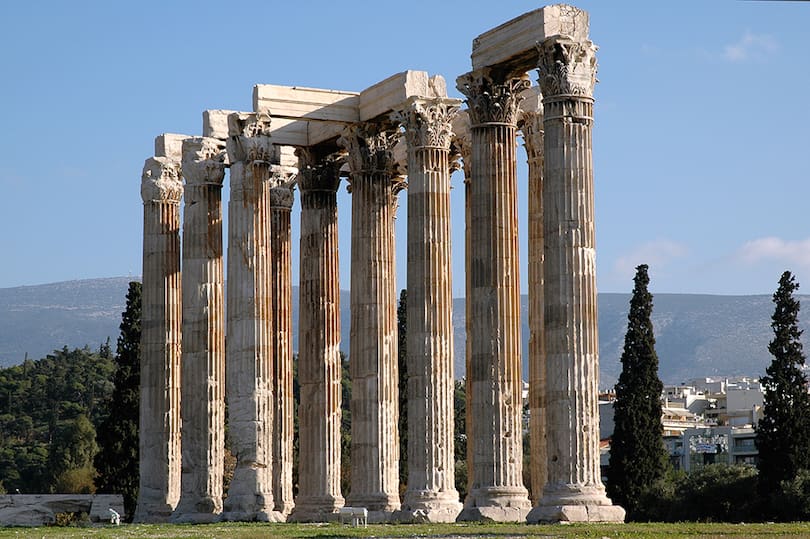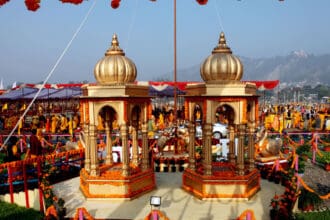Discover the top 10 most famous Greek temples that showcase the brilliance of ancient architecture. This comprehensive guide provides insights and information about each temple, taking you on an extraordinary journey through history.
Introduction
Welcome to a fascinating journey through time and architecture, where we explore the 10 most famous Greek temples. These awe-inspiring structures stand as a testament to the skill, artistry, and engineering prowess of ancient civilizations. From the iconic Parthenon to the mystical Temple of Apollo, each temple has a unique story to tell.
Throughout this article, we will delve into the historical significance, architectural features, and cultural impact of these remarkable temples. Join us as we embark on an adventure filled with insight, wonder, and discovery. Let’s step back in time to explore the grandeur of the 10 Most Famous Greek Temples.
10 Most Famous Greek Temples
- The Parthenon: The Epitome of Classical Greek Architecture The Parthenon, located atop the Acropolis in Athens, is the embodiment of classical Greek architecture. Built in honor of the goddess Athena, this Doric masterpiece is renowned for its harmonious proportions and refined design. The magnificent marble columns and intricate friezes leave visitors in awe, making it a symbol of democracy and civilization.
The Parthenon stands tall, overlooking the city of Athens, and its grandeur continues to captivate visitors from around the world.
- Temple of Apollo at Delphi: The Oracle’s Sanctuary Nestled on the slopes of Mount Parnassus, the Temple of Apollo at Delphi was dedicated to the god Apollo. It was home to the famous Oracle of Delphi, where ancient Greeks sought guidance and prophecy. The temple’s architecture combines Doric and Ionic styles, with breathtaking views of the surrounding landscape.
What mysteries lie hidden within the walls of the Temple of Apollo? The whispers of the Oracle still echo through its ancient corridors.
- Temple of Hephaestus: A Marvel of Ancient Workmanship The Temple of Hephaestus, located in the Agora of Athens, is one of the best-preserved ancient Greek temples. It is dedicated to Hephaestus, the god of craftsmanship, and Athena, the goddess of wisdom. The temple’s Doric columns and intricate friezes illustrate the skill and precision of ancient Greek artisans.
Step into the world of blacksmiths and craftsmen as you explore the Temple of Hephaestus, a living testament to the mastery of ancient architects.
- Temple of Hera at Olympia: Where the Olympic Flame Ignited As the oldest temple in Olympia, the Temple of Hera holds immense historical importance. It was dedicated to the goddess Hera and served as the starting point for the ancient Olympic Games. The temple showcases the early Doric style and reflects the significance of sports in ancient Greek culture.
Immerse yourself in the spirit of the ancient Olympics as you visit the Temple of Hera, where the flame of competition first burned.
- Temple of Artemis at Ephesus: An Architectural Wonder The Temple of Artemis at Ephesus, one of the Seven Wonders of the Ancient World, was a grandiose structure dedicated to the goddess Artemis. Its awe-inspiring size and remarkable sculptures made it a marvel of ancient architecture. Sadly, the temple no longer stands, but its memory lives on in historical accounts.
Marvel at the magnificence of the Temple of Artemis, a testament to the ambition and skill of ancient architects who sought to create wonders.
- Temple of Poseidon at Sounion: Guardian of the Aegean Sea Perched atop a cliff overlooking the Aegean Sea, the Temple of Poseidon at Sounion is a testament to the power and might of the sea god Poseidon. The temple’s commanding presence and panoramic views make it a favorite destination for visitors seeking both history and natural beauty.
Feel the salty sea breeze and hear the crashing waves as you stand before the Temple of Poseidon, guarding the Aegean with unwavering strength.
- Temple of Apollo Epicurius: A Hidden Gem in the Mountains Deep within the mountains of Arcadia, the Temple of Apollo Epicurius stands as a hidden gem of ancient architecture. Designed by the renowned architect Iktinos, this Doric temple reflects the ingenious fusion of artistic vision and technical expertise.
Discover the enigmatic beauty of the Temple of Apollo Epicurius, tucked away in the serene embrace of nature.
- Temple of Athena Nike: Victory in Splendor The Temple of Athena Nike, located on the Acropolis of Athens, is a testament to the goddess of victory. Its intricate friezes depict Greek triumphs in battle, exuding an aura of triumph and honor. Despite its small size, this Ionic temple is a symbol of the enduring spirit of Athens.
Experience the essence of victory at the Temple of Athena Nike, where every stone speaks of valor and achievement.
- Temple of Asclepius at Epidaurus: A Healing Sanctuary The Temple of Asclepius, nestled within the sanctuary of Epidaurus, was dedicated to the god of healing and medicine. This well-preserved Doric temple provided a place of solace and hope for those seeking miraculous cures. The adjacent theater is renowned for its acoustic perfection, offering a divine experience for theater enthusiasts.
Step into the healing realm of the Temple of Asclepius, where ancient pilgrims sought solace and restoration.
- Temple of Zeus at Olympia: Majestic Marvel of Olympia The Temple of Zeus at Olympia, another marvel of the ancient world, honored the king of gods, Zeus. This Doric temple housed one of the Seven Wonders, a colossal statue of Zeus, sculpted by Phidias. The temple’s ruins stand as a testament to the grandiosity and artistic prowess of the ancient Greeks.
Stand before the remnants of the Temple of Zeus, and let your imagination soar to the heights of ancient magnificence.
FAQs
Q: Which is the most famous Greek temple? A: The Parthenon, located in Athens, is undeniably the most famous Greek temple, renowned for its architectural perfection and historical significance.
Q: Are the ancient Greek temples still in use today? A: While most ancient Greek temples are no longer used for religious purposes, they remain essential historical and cultural landmarks that attract visitors from around the world.
Q: Why were Greek temples built on elevated ground? A: Greek temples were often constructed on elevated ground to demonstrate their prominence and to be visible from a distance, symbolizing the connection between the divine and the mortal.
Q: How long did it take to build a Greek temple? A: The time required to build a Greek temple varied depending on its size and complexity. It could take several years or even decades to complete a grand temple.
Q: What materials were used to construct Greek temples? A: Greek temples were primarily constructed using locally available materials, such as limestone, marble, and sandstone. Marble, being the most prized, was used for the finest temples.
Q: Why did ancient Greeks hold religious festivals at temples? A: Religious festivals were held at temples to honor and appease the gods, seek their blessings, and celebrate various cultural and agricultural events.
Conclusion
The 10 most famous Greek temples stand as timeless symbols of human ingenuity and creativity. Each temple narrates a tale of ancient beliefs, rituals, and artistic achievements, offering glimpses into a civilization that shaped the course of history. As visitors, we are humbled by the grandeur and beauty of these architectural wonders, understanding that they have left an indelible mark on our shared human heritage.
If you ever get the chance, embark on a journey to these sacred sites to experience the magic and mystery of the ancient world firsthand. And as you wander amidst the ruins, remember that these temples, once bustling centers of worship, continue to inspire awe and wonder in the hearts of all who behold them.







